Project: Chime
Chime is an ambient communication device that uses sensor technology and electromagnets to create a poetic, non-digital way for people to connect across distance. When one person touches a sensor in their location, it triggers a gentle wind chime to ring in another person’s space, creating a subtle, beautiful way to say “I’m thinking of you” without the use of screens.
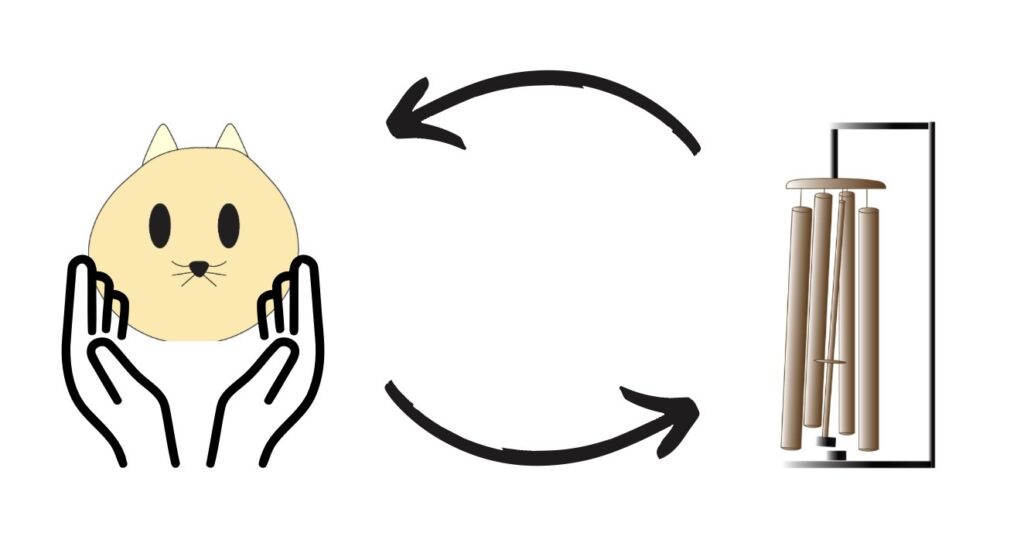
Problem:
People who are separated by distance struggle to find meaningful ways to come together. I wanted to create an intimate, fun communication experience for people to connect. The goal of this project is to promote positive interactions and togetherness while reducing screen time.
14 Million
People In The US Are In Long-Distance Relationships
50%
Grandparents Live More Than 200 Miles Away From A Grandchild
87.7
Number of Text Messages Sent & Received Per Day, Average User
Inspiration:
Chime was completed as a final project for a Designing Networked Objects class, part of my master’s program at USC. I wanted to learn about sensor technology and physical computing while exploring imaginative ways to connect without screens.
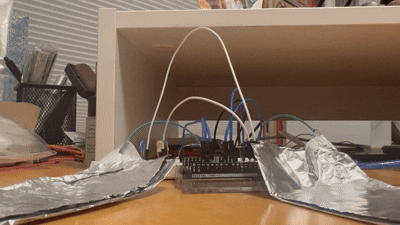
The inspiration came after attending a Bay Area Maker Faire where I saw a project using capacitive touch to change light colors. I love the magic of sensor technology and this sparked my interest in using physical response to human touch.
Iteration:
I was looking for a unique way for people to connect across distance in a soft, gentle way, something more ambient than typical digital messages.
Initial ideas focused on biofeedback and interactive lights.
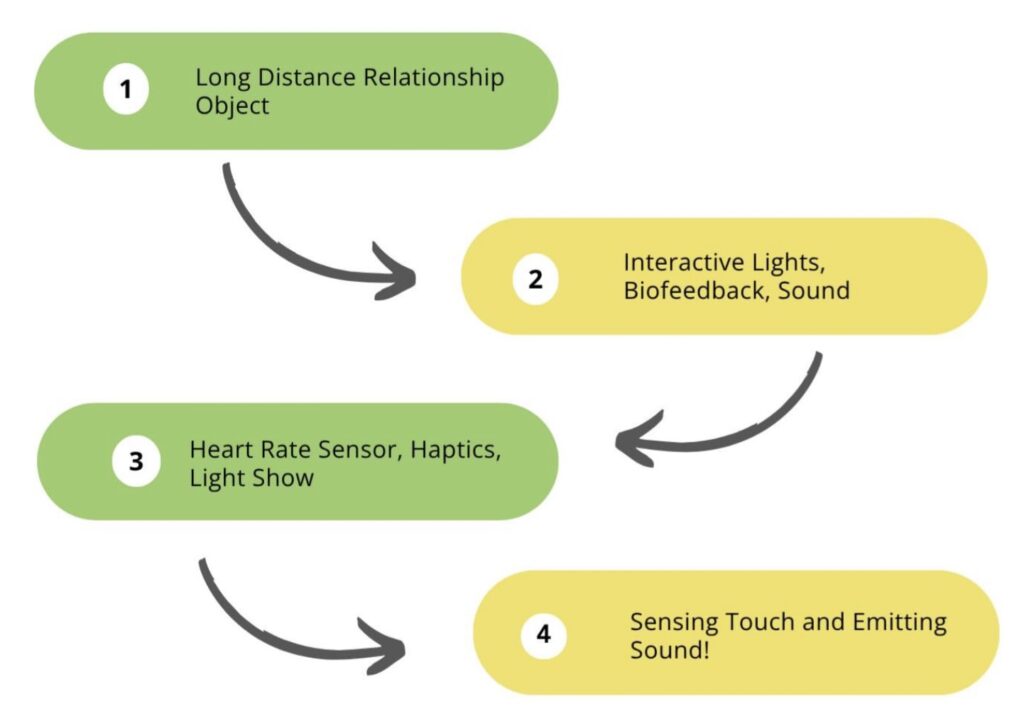
Why Windchimes?
- Symbolic of health and happiness
- Associated with positive energy and mindfulness
- Sounds promote peace, reflection and remembrance
- Whimsical in the home, as they are typically found outside in a garden!
How does it work?
Two magnets are placed opposite one another. One is attached to the windchime striker, the other, an electromagnet, is attached to the frame base.
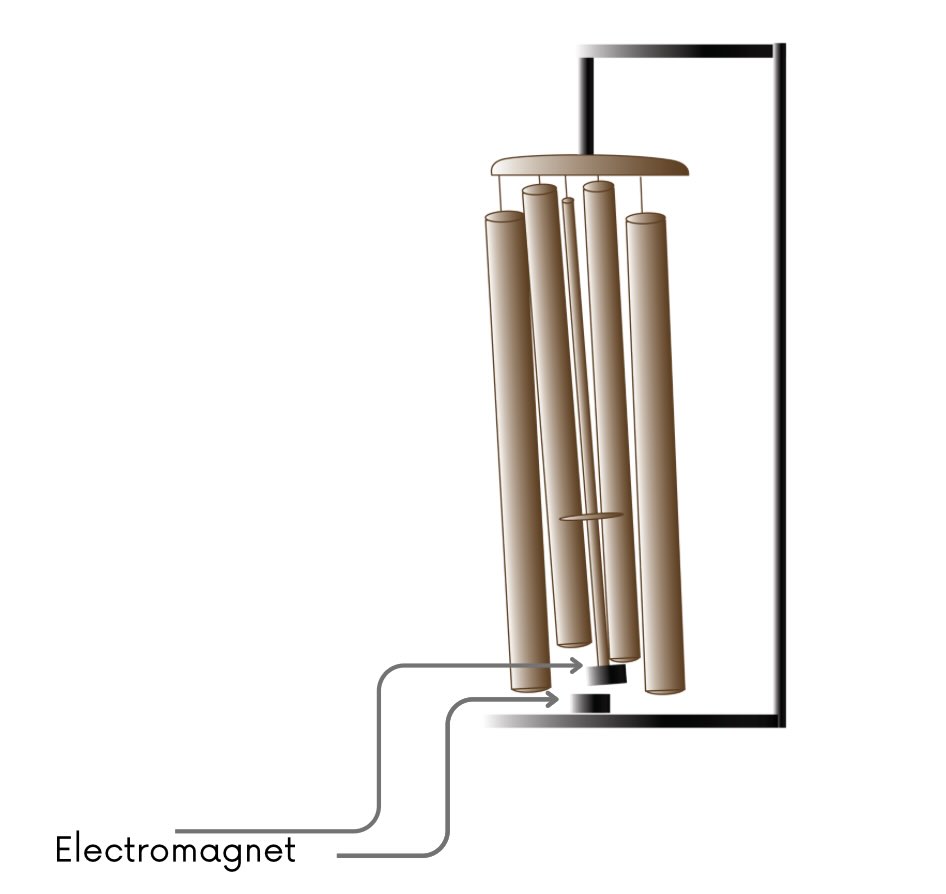
With an Arduino microcontroller and a motor driver, the electromagnet’s power, strength, and action can be adjusted. Lower sensor values result in gentle movement, while higher sensor values result in faster, stronger movement.
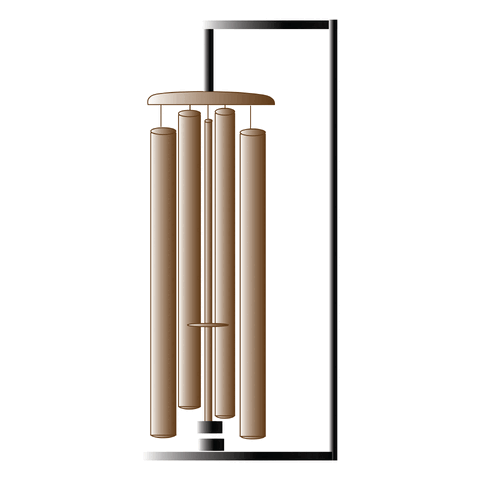
Constructing Prototype: Windchimes
My initial testing used a nail taped to a wooden rod. I wanted to experiment with the microcontroller and electromagnet, proving I could get movement by controlling the power of the magnet.
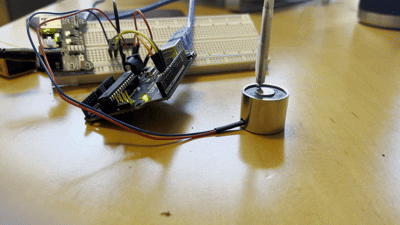
In the next iteration, I attached a magnet to the wooden striker dowel to create the oppositional force.
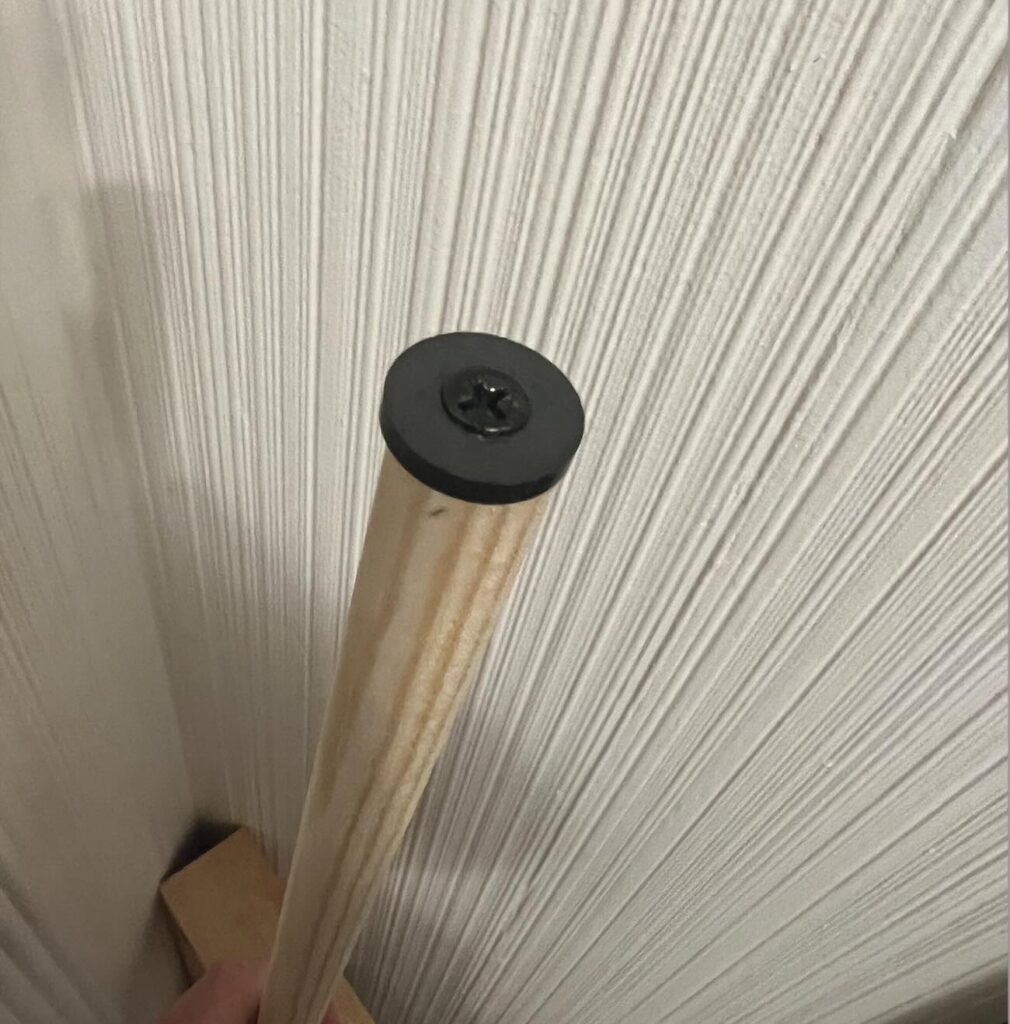
I then constructed a base to hold the windchimes and electromagnet. I wanted it to have a clean, natural aesthetic and chose wood as the main material, which I stained with a light finish.
Finally, I built a box to hide the electronics and added an on/off switch.
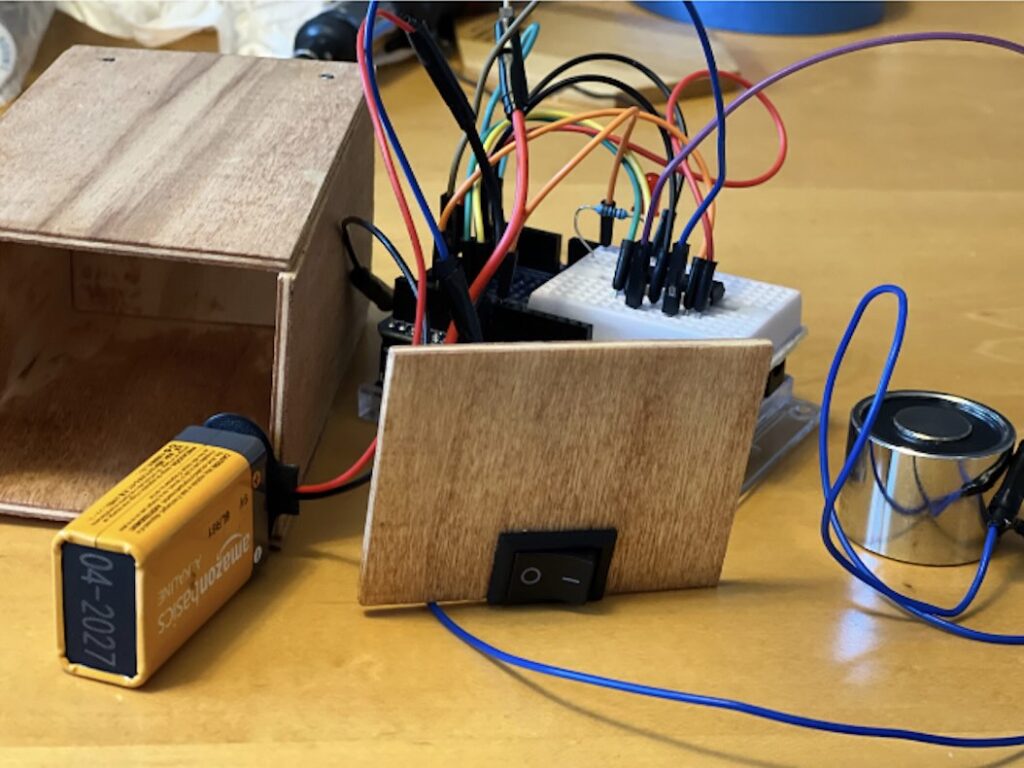
The chimes were then mounted to the wall. Voila!

Constructing Prototype: Sensor Object
For the sensor object, I chose an avocado plushy.

- represents love
- two halves in a sliced avocado represent each person in a relationship
- historically been a symbol of longevity, family, protection and good luck
- grown in nature, found in outdoor garden
- irresistibly huggable
The conductive fabric sensors were sewn into the plush avocado with conductive thread.
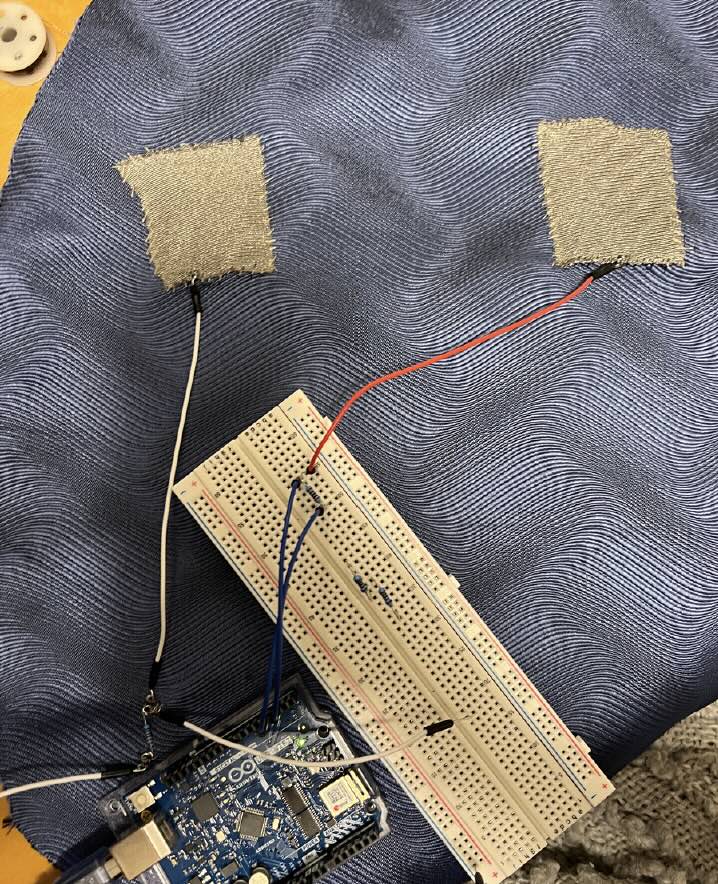

The finished prototype:
Simply give the plushy a hug and send a chime to your loved one.

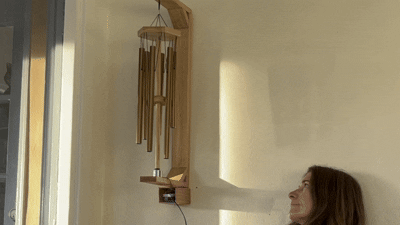
Challenges and Learning:
This project presented numerous technical challenges, as this was my first experience with microcontrollers, breadboards, and sensors. I had to learn coding, physical computing, and electromagnet implementation while also using woodworking and sewing skills.
Power management became a significant hurdle, as I discovered that my conductive fabric sensor required a ground connection, which prevented me from utilizing the battery power I had initially intended. The conductive fabric was also less reliable than my initial aluminum foil proof-of-concept, requiring calibration of trigger sensitivity levels to achieve optimal performance.
Additionally, I had to navigate the interpersonal challenge of motivating my class partner to invest the necessary time and effort. Despite these obstacles, the project taught me lessons about physical computing, the importance of early prototyping, and the power of the maker community’s collaborative spirit in problem-solving and knowledge sharing.

Additional Resources:
Project Repository:
https://github.com/tlm-design/idsn536
Process Videos:
Concept promotional video
Early Prototyping: testing electromagnet with metal attached to wooden dowel
Code Testing: Arduino controlled chimes